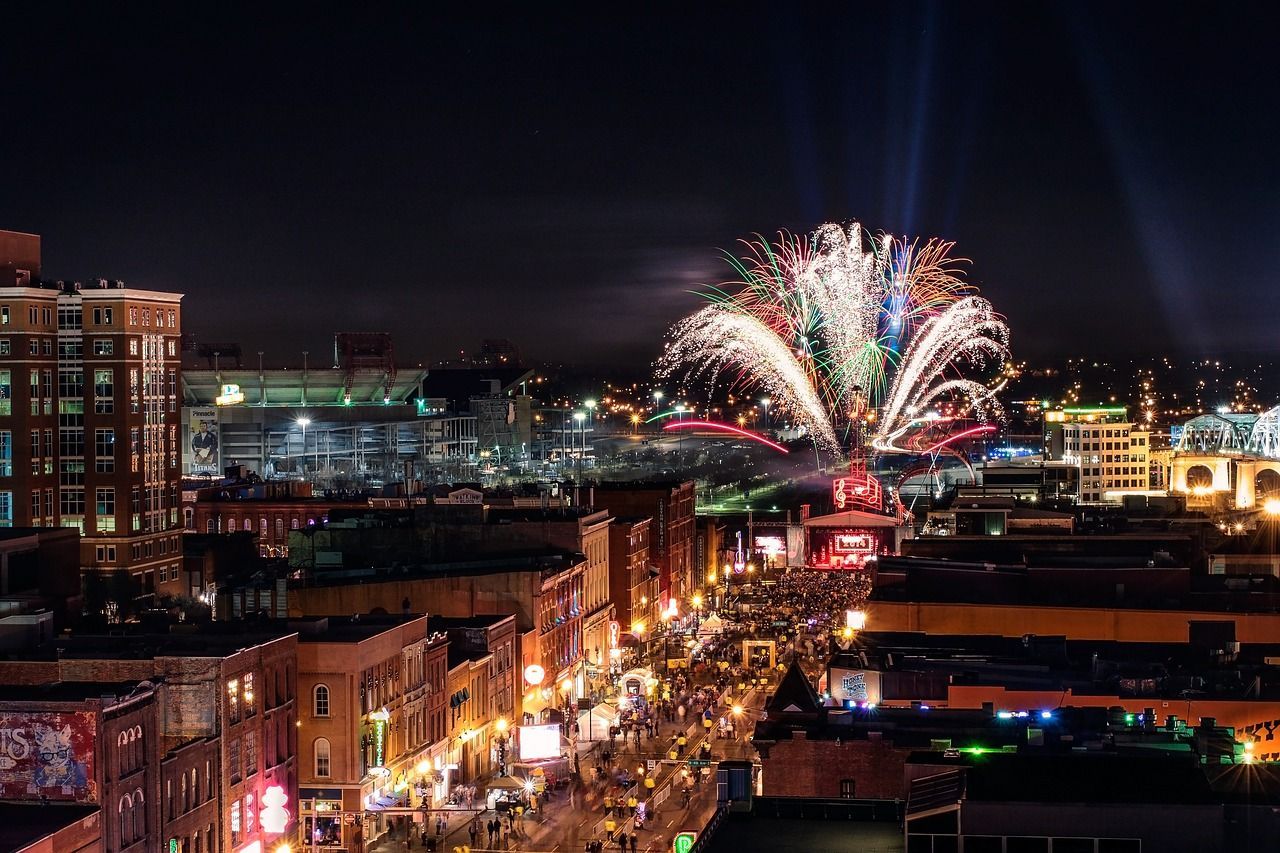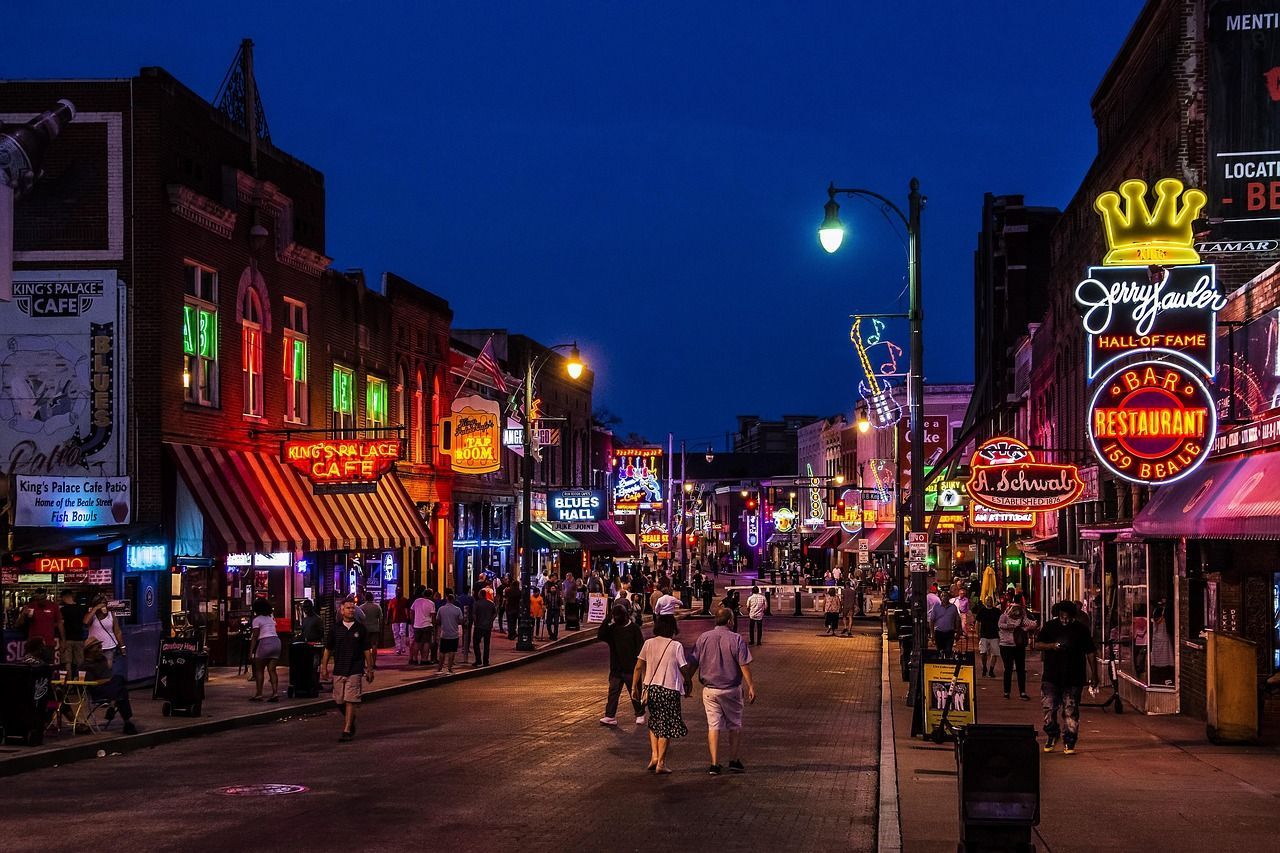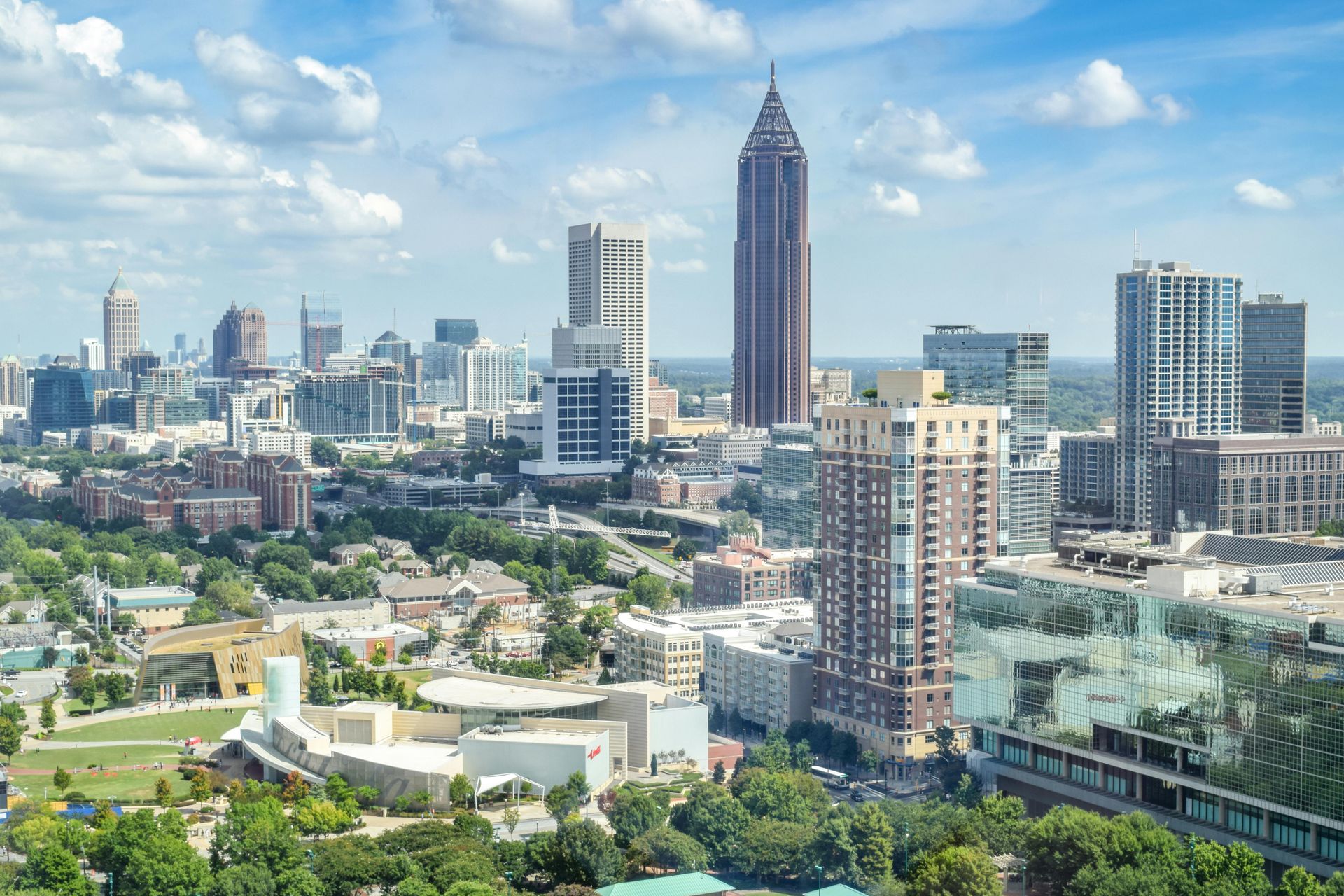With a climate like South Korea, it’s unsurprising the country has many incredible summer vacation locations. The southern island of Jeju is one of the most popular destinations for summer retreats.
Although fairly small, you still have plenty of choices when it comes to the best areas to stay in Jeju.
Despite being well-known by locals, Jeju remains largely undiscovered by western tourists. As such, it’s unsurprising that many don’t know where to start when choosing where to stay on Jeju.
From the bustling Jeju City to the laid-back east side of the island, Jeju has something to suit every genre of vacation. That is why I will now take you through the top locations to consider for your stay on Jeju Island, to make settling on your dream destination much easier.

Jeju At A Glance
Located off of South Korea’s southern coast, Jeju is a volcanic island covering 1,833.2 square kilometres (707.8 square miles). It centres around the Mount Hallasan volcano. As a result of its volcanic activity, the shoreline of Jeju boasts impressive rock formations erupting out of the sea.
Jeju is both the largest and most populous of South Korea’s islands. However, at just 73 kilometres (45 miles) end to end, it is still fairly compact. There’s still space for various small towns though, along with two small cities, Jeju City and Seogwipo.
With around sixteen million visitors each year, Jeju is a hugely popular vacation destination. However, with only around two million of those being foreigners, it is still largely underutilised by travellers from outside of South Korea.
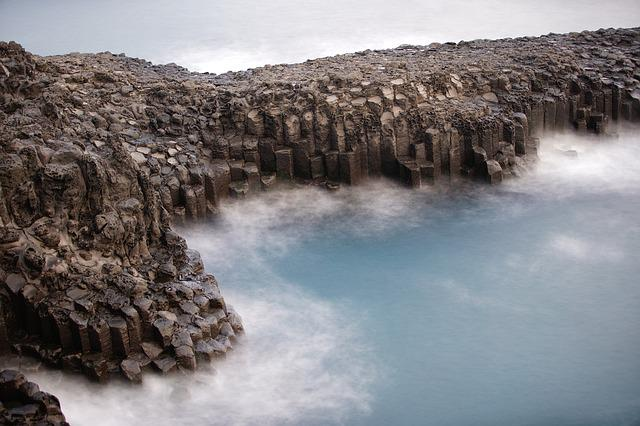
Best Time To Visit Jeju
Jeju is South Korea’s quintessential summer destination. With sandy beaches and temperatures averaging in the high 20°c’s (mid 80°f’s), from June to September, the island is perfect for lazy vacations relaxing in the sun, sea, and sand.
With monsoon season typically hitting between June and July, you may want to avoid early summer. That makes the latter half of the season, in August and September the best time to visit Jeju, as it is perfect for some summer fun.
As the most southern point in South Korea, Jeju is also typically the first place that the cherry blossoms bloom each year. As such, the island makes the perfect place to visit in the early spring. It might not quite be lazing on the beach weather yet, but it’s certainly beautiful.
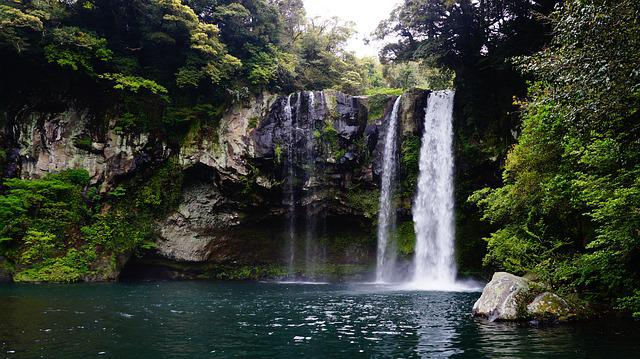
Best Areas To Stay In Jeju
To help you decide where you’d best enjoy your vacation, I have picked out the four best areas to stay in Jeju, South Korea. Each area has its own benefits, along with some drawbacks, and I’ll be covering all the major points of interest for you.
Jeju City (Best Place To Stay In Jeju For Nightlife)
The largest city on the island, the eponymous Jeju is packed with everything you’d need or want from an indulgent city break. The wide variety of shopping and dining options, along with plentiful attractions, ensure that the city will keep any visitor entertained.
Whilst the bustling metropolis might feel removed from the traditional culture of Jeju, the Jeju National Museum and the Jeju Folklore and Natural History Museum both provide a rich introduction to the island’s heritage.
Meanwhile, the stunning Yongyeon Pond, with its traditional pavilion overlooking turquoise waters offers a slice of typical Korean style. It’s especially beautiful at night, when its bridge is lit up by rainbow illuminations.
If having plenty of nightlife options to choose from is a priority, then Jeju City is definitely the right choice for you, as it is easily the best place to stay in Jeju for nightlife.
This is where you’ll find the best selection of clubs, pubs, and karaoke bars on the island. The nightlife scene in Jeju is more laid-back than the bigger, mainland cities, but there’s still plenty of variety.
If you feel like taking a break from the city, you can escape into nature by heading south up Hallasan Mountain. The massive volcano is the highest mountain in South Korea, so you know the views from the top are spectacular.
Jeju City is the most convenient location on the island to get to. Both the international airport and the main port are located here. If you’re only in Jeju for a couple of days and don’t want to waste time travelling to and from your accommodation, this should be your top choice.
Stay in Jeju City If:
- You are visiting for just a couple of days
- You want to stay close to transport links
- Lively nightlife is a priority
Best Hotel To Stay In Jeju City - Ocean Suites Hotel
Ocean Suites is a stunning, contemporary hotel, just metres from the waterfront. The hotel’s unobstructed sea views are unbeatable.
The hotel exudes modernity and style on every level. From its chic reception to its elegant restaurant and fashionable rooftop bar, Ocean Suites is the pinnacle of sophistication.
The rooms are delightfully spacious and bright. All rooms include a flatscreen television with cable, mini-fridges, and air-conditioning. Families with children can enjoy the colourfully decorated family rooms.
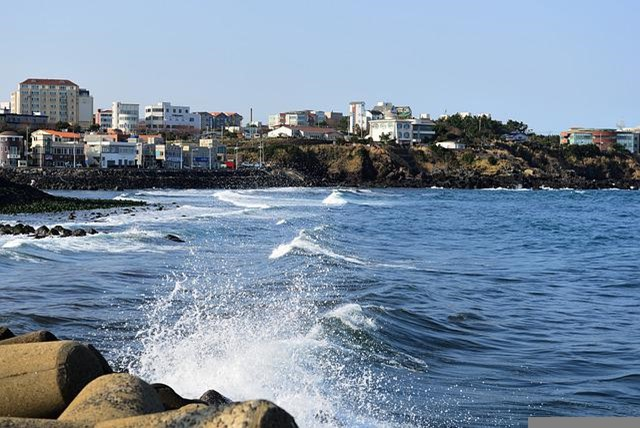
Seogwipo (Best Place To Stay In Jeju For Nature Lovers)
If you’re looking for all the conveniences of a city break but with a more laid-back atmosphere, Seogwipo is perfect. The second largest town on the island, Seogwipo has plenty to keep you occupied without feeling overcrowded or overbuilt.
In the town you will find plenty of cafes and restaurants to choose from. Offering a good mix of Korean cuisine and international fare, you won’t have to worry about finding something to please everyone.
Lee Jung Seop Street will be a favourite of art lovers.
The street is named for a well-known artist who once lived there. Lee Jung Seop Street is lined with artists’ studios and galleries, while Lee Jung Seop’s old house has been converted into a gallery where you can view the celebrated artist’s works.
Although Seogwipo is a city, you can still revel in Jeju’s natural beauty here. The town is surrounded by stunning natural features and locations for you to explore, which makes it the best place to stay in Jeju for nature lovers.
The lovely Jeongbang and Cheonjiyeon waterfalls are both within the city itself. Meanwhile, the lush Seogwipo Forest of Healing is just to the north of town. The forest is riddled with hiking trails leading through the ancient trees and up into the mountains.
A walk along the waterfront really lets you appreciate Jeju Island’s volcanic landscape. Where the lava rock meets the ocean it has formed the Hwanguji Natural Pools. The pools are great for checking out the local marine life, or for taking a dip in the sheltered water.
The lava has also formed some impressive rock formations along the coast. One of the most beloved is Oedolgae, a group of jutting rock columns and soaring cliffs that make a popular sunset location.
Located on the island’s south side, separated from Jeju City by Hallasan mountain, Seogwipo is quite a way from the main port and airport.
While this helps keep it as comparatively quiet as it is, it does make it harder to get to, so be prepared to factor in extra travel time when arriving and leaving.
Stay In Seogwipo If:
- You want the convenience of a city break without all the hustle and bustle.
- You want plenty of cultural attractions to explore
- You like spending time out in nature
- Staying close to transport links is not a priority
Best Hotel To Stay In Seogwipo - GoldOne Hotel And Suites
GoldOne is a gorgeous, 4-star hotel, located just 200 metres from the waterfront. Just outside of Seogwipo city, the area is quiet whilst being conveniently nearby to the town’s amenities and amusements.
Just a few minutes’ walk from the closest beach and featuring a luxurious pool area of its own, GoldOne is perfect for relaxing summer vacations in the sun. A roof terrace and furnished garden provide even more space in which for guests to unwind.
All the rooms in GoldOne are south-facing, providing tons of natural light, as well as pool and sea-views as standard. Flatscreen televisions, free wi-fi, air-conditioning, and tea and coffee facilities are also included with all rooms and suites.

West Jeju (Best Place To Stay In Jeju For Families)
West Jeju is the best place to stay in Jeju for families. This side of the island is abundant in cushy resorts and boasts plenty of family friendly attractions to keep visitors of all ages entertained, making it ideal for family vacations, no matter how big your party may be.
There are various theme parks for you to enjoy. From one dedicated entirely to elephants to another featuring a slide made of ice, there is sure to be something to pique your interest.
There are several museums to browse as well. The chocolate museum in particular is perfect for a more laid-back family day out.
Older visitors looking for a more cultural experience might be interested in the Osulloc Tea Museum. The museum offers visitors the opportunity to wander through tea fields, learn about Korea’s traditional tea culture, and partake in some delicious drinks and treats in the café.
The Tea museum is right next to the Jeju Aerospace Museum, which offers an alternative for any group members with no interest in tea. Meanwhile, the Museum of Chusa Kim Jeong Hyui provides a look at the island’s cultural development throughout its settled history.
Of course, if you’re coming to Jeju for a sunny summer family holiday you are probably going to want beaches and the west side of the island does not disappoint.
Gwakji Beach in the north is particularly popular, with various water sports and activities available along the stretch of soft sand.
Unlike Jeju City or Seogwipo, the west of the island is comprised of various smaller towns. Since public transport on Jeju can be sporadic, West Jeju is better for those who will be hiring a car for their stay. Otherwise, you’ll have to accept arranging your days around sparse bus timetables.
Stay In West Jeju If:
- You are planning a laid-back family vacation
- You want plenty of family friendly activities
- You will be hiring a car for your stay
Best Hotel To Stay In West Jeju - Lucid M
Lucid M is a stunning, contemporary hotel, within a fifteen-minute walk of the beach. Surrounded by cliffs and fields, the hotel is a wonderful meeting of nature and modernity. If you want to stay somewhere with stunning ocean or mountain views, Lucid M is perfect.
The rooms are wonderfully spacious, with plenty of room for both desks and lounge areas. Some also include furnished balconies or terraces, providing even more space for you to relax in privacy.
Wi-fi, flatscreen televisions, and hot drinks facilities are included with all rooms. Guests with cars can also enjoy free onsite parking, while there is also a communal garden for all to enjoy.
The onsite bar, restaurant, and café serves meals and snacks throughout the day with stunning views. The dining terrace provides a particularly lovely place to enjoy breakfast and start your day on a high.
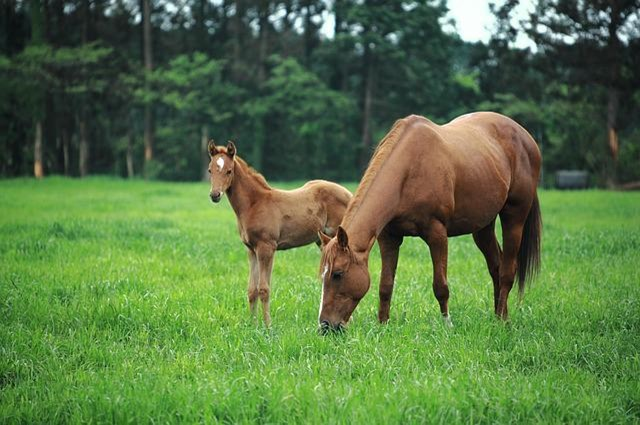
East Jeju (Best Area To Stay In Jeju For Peace And Quiet)
If you are looking for a laid-back vacation, then the eastern half of the island is the best place to stay in Jeju for peace and quiet. Unlike the bustling cities or the west’s family resorts, East Jeju is much more sparsely populated, comprised of smaller, more rural towns and villages.
With more space between towns, there is more opportunity for you to enjoy the natural landscape.
Bijarim Forest is home to 800-year-old nutmeg trees. The east end of the island is also riddled with caves, many of which connect to Jeju’s network of lava tunnels that run under the ground.
Various attractions throughout east Jeju take advantage of the area’s natural beauty. The Jeju Rail Bike is a unique ride that winds around the hills and through fields of sheep, cows, and Jeju’s wild horses.
EcoLand offers a similar journey, this time aboard a quaint steam train. You can ride the comfortable carriages through manicured gardens and wild fields, taking in pretty windmills, traditional statues, and natural landmarks.
Alternatively, if you want some insight into the island’s culture, Seongeup Folk Village provides a fascinating glimpse into the history and heritage of Jeju. The quaint neighbourhood of stone, thatched cottages is still home to a small community of traditional craftspeople.
The east Jeju is also closest to Udo, so is ideal for those wanting to explore the smaller island.
The quaint little island is known for its coral beaches, lights houses, and various restaurants and cafes that line its waterfront. There’s even an Udo Museum where you can learn more about the island’s history and heritage.
With everything more spread out than elsewhere on Jeju, the east of the island really is better left to those planning to hire a car for their stay. Of course, you can rely on public transport if you are really set on escaping to this quiet retreat.
Stay In East Jeju If:
- You are planning a quiet retreat
- You want to stay away from the more touristy areas
- You will have a car for your stay
Best Hotel To Stay In East Jeju - Thira Hotel
Thira is a fabulous, contemporary hotel in the Goseong area of East Jeju. Located a little outside the nearest town, the area is especially quiet and peaceful.
Just 250 metres from the ocean, many of the rooms boast sea views. Gwangchigi Beach and Sinyang Beach are both within 1000 yards of Thira Hotel.
The comfortable rooms are minimalist and airy, with lots of natural light. You can choose between traditional futon bedding or western style beds. Private bathrooms, flatscreen televisions, and electric kettles are standard. Some rooms have private balconies or terraces.
Guests can also relax on the rooftop sun-terrace, or at the onsite restaurant and café where you can enjoy traditional Korean cuisine. Nearby attractions include the Aqua Planet aquarium, Seongsan Canola Flower Field, and the Bunker de Lumières art museum.
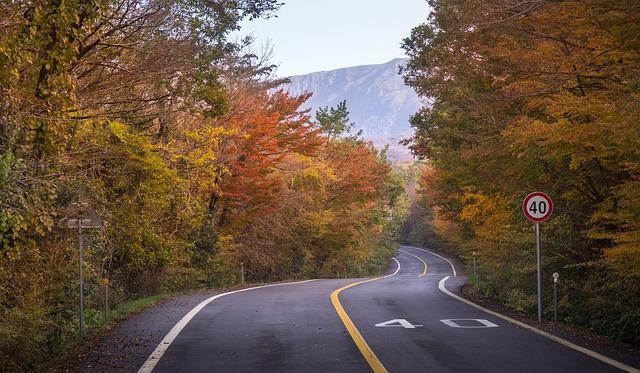
Final Thoughts
Although Jeju is a reasonably small island, the various areas each have their distinct atmospheres and attractions. Now that you know what each of the major locales have to offer you should have an easier time deciding on the best area to stay in Jeju for your perfect vacation.
Unlike the South Korean mainland, Jeju’s public transport network leaves a lot to be desired.
Unless you plan to hire a car for your stay, or are prepared to shell out for taxis, getting around the island can be a pain. As such, Jeju is a place where choosing the right place to stay is pretty important.
That said, the whole island is lovely, so wherever you choose, you know you will be surrounded by beautiful nature, stunning historic and cultural sites, and fascinating and thrilling attractions.
Now that you know where to stay in Jeju, all that’s left is to plan your dream Jeju travel itinerary. That way, you can get everything booked and start looking forward to experiencing it all for yourself as soon as possible.
